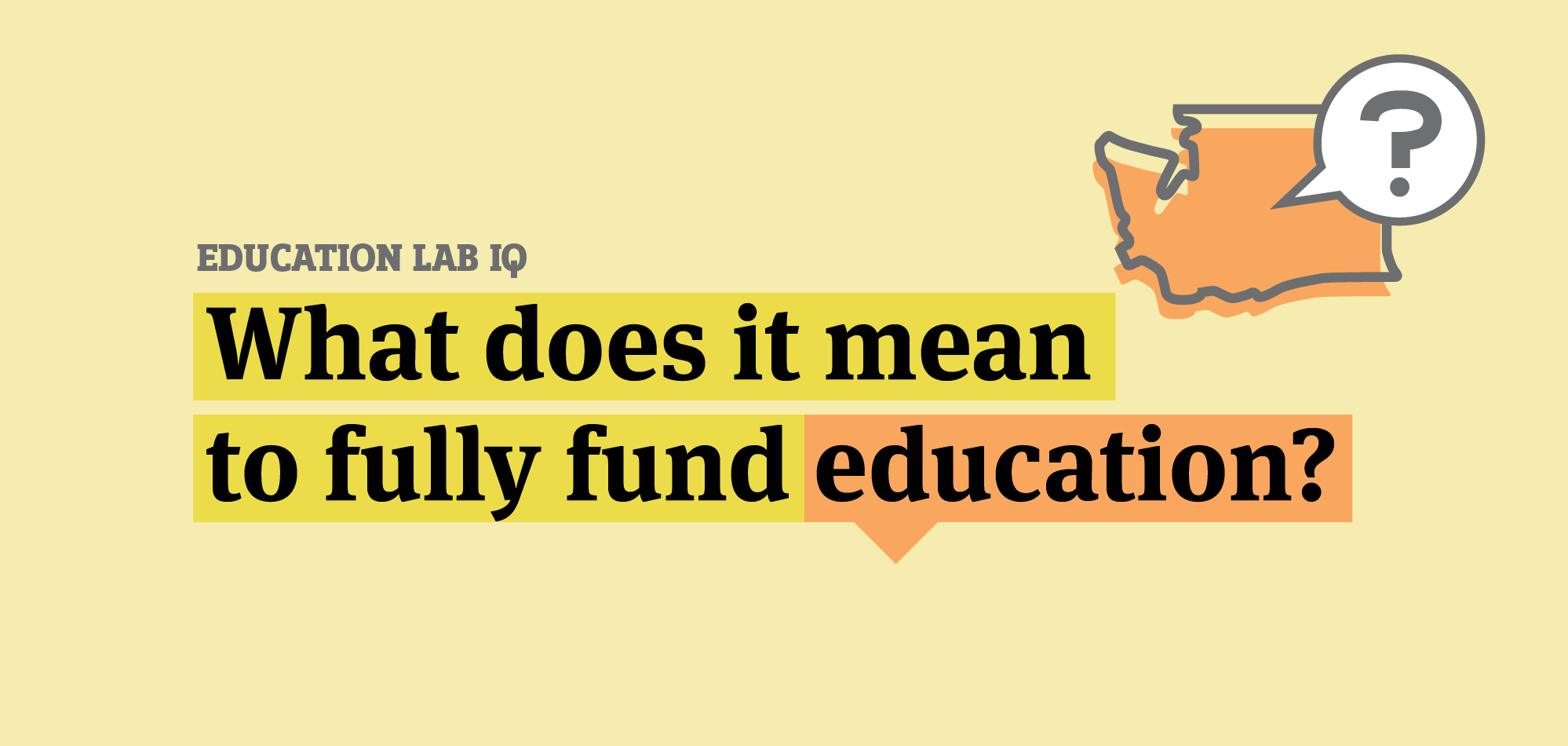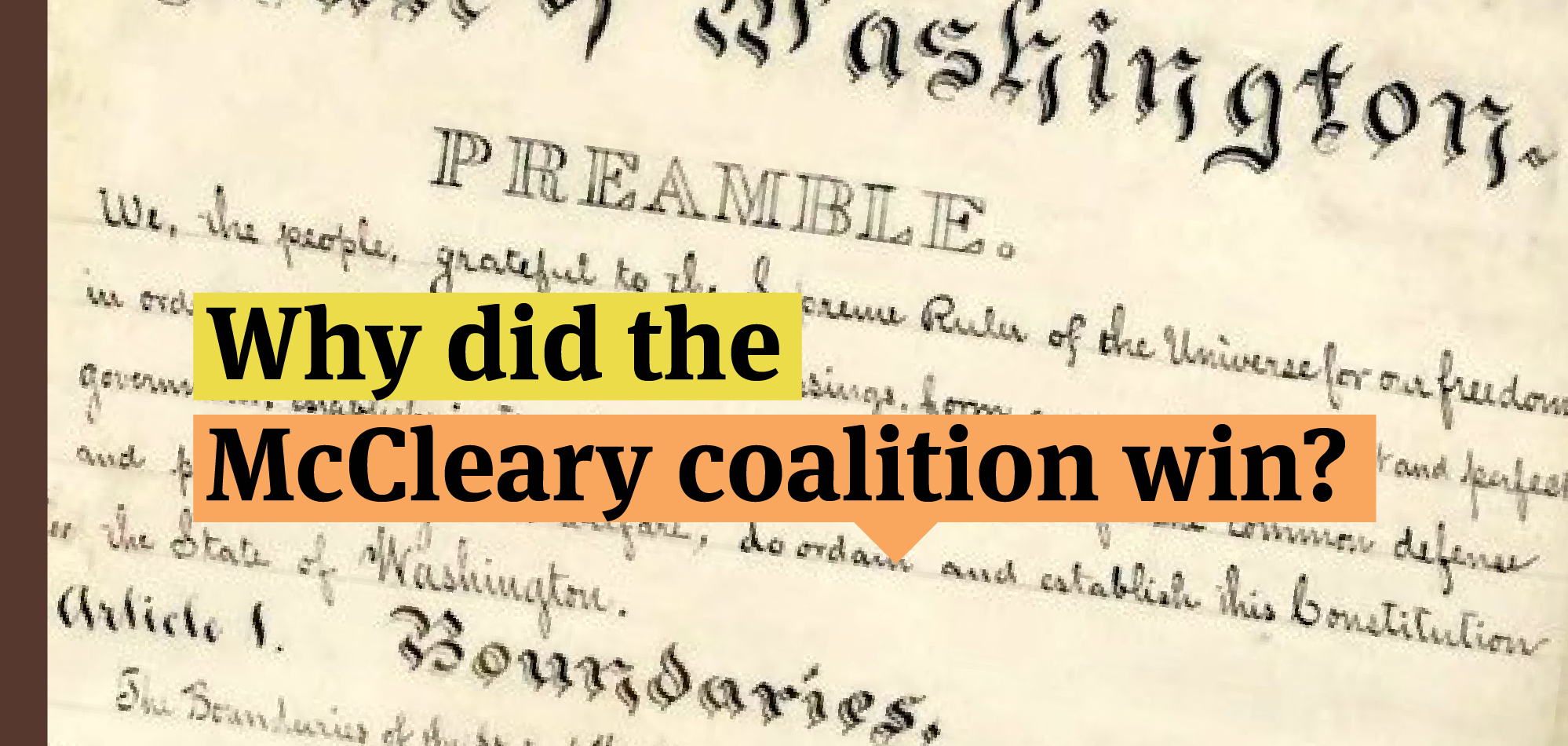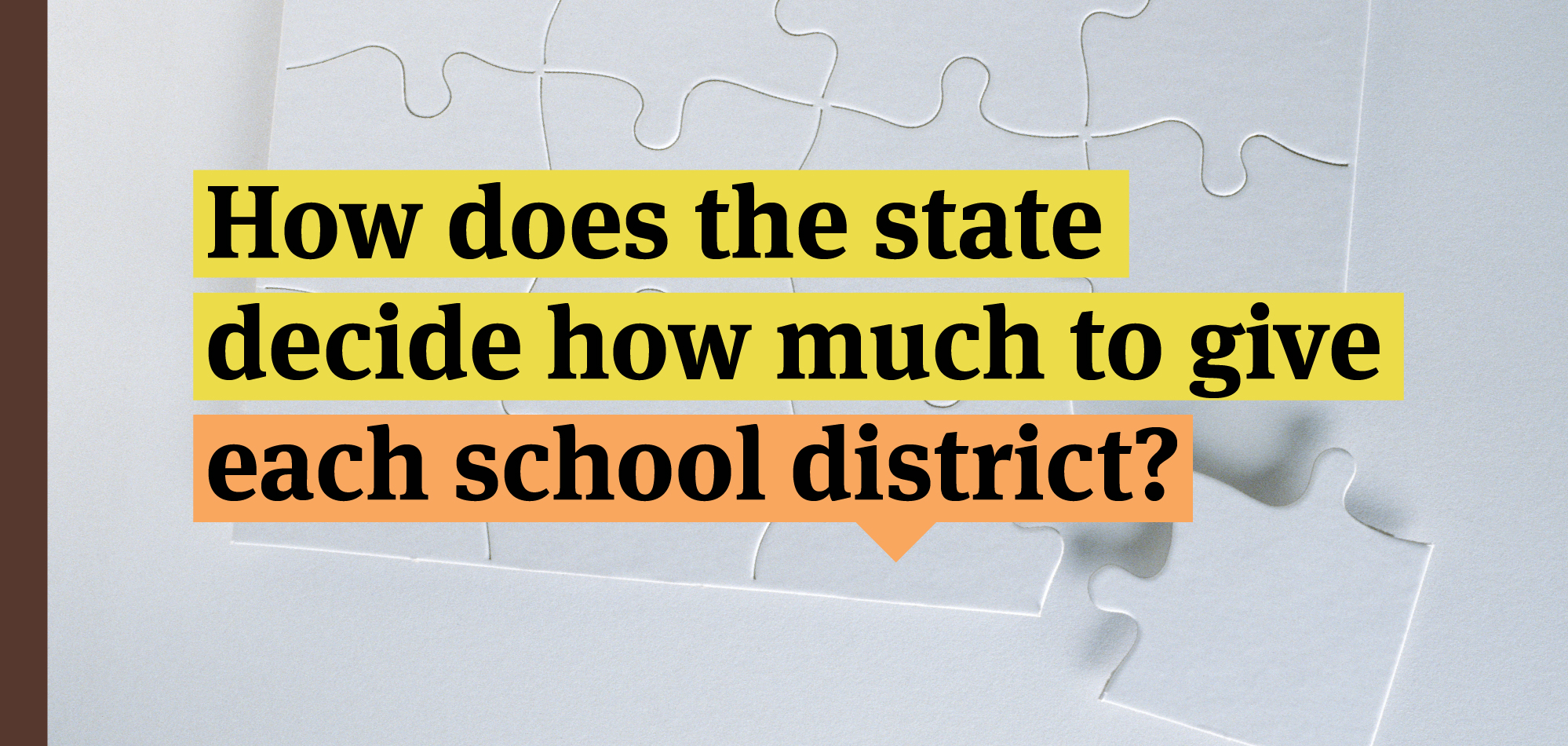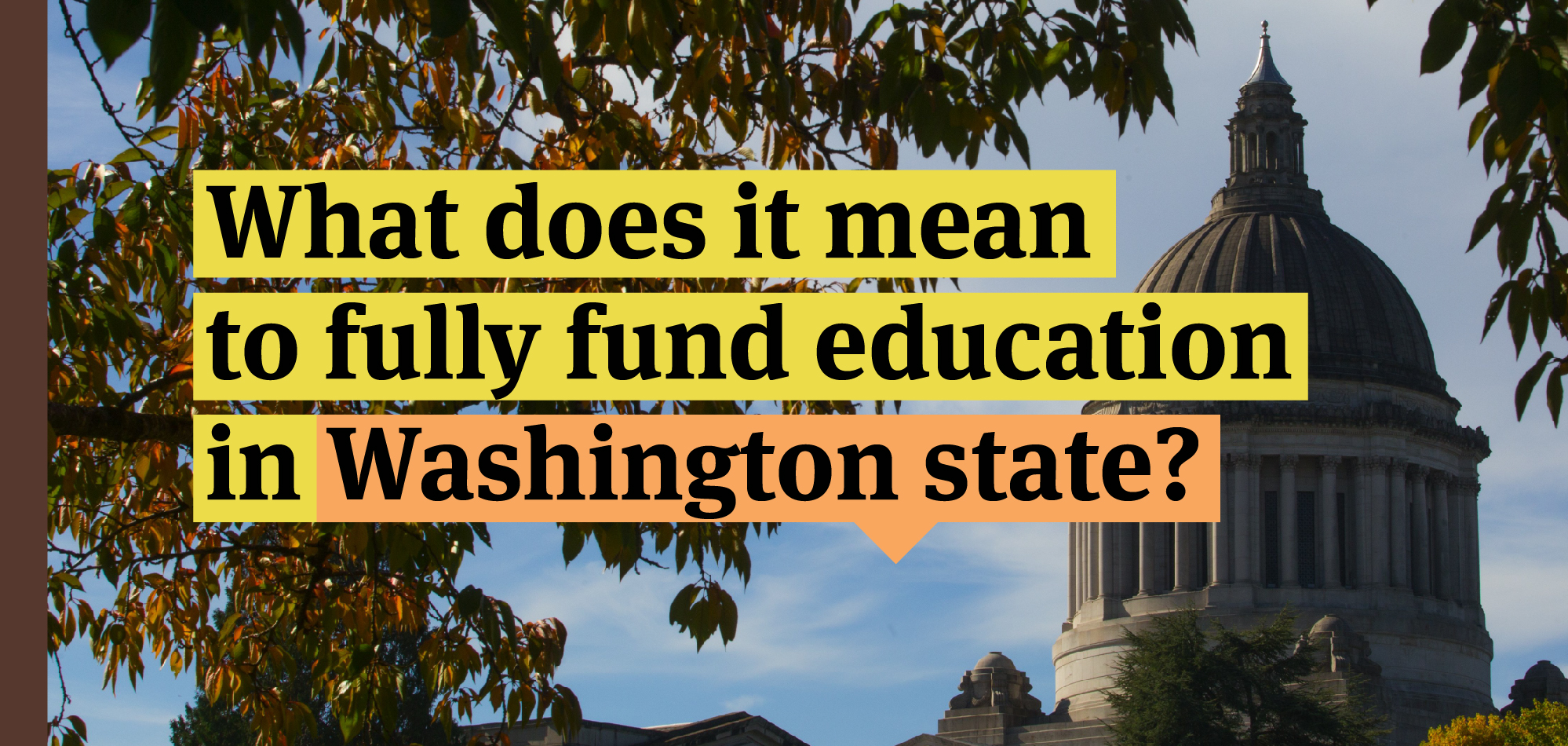

A few months ago, as part of a project we’re calling Education Lab IQ, we asked readers what questions they wanted us to answer. Sharon Vashon asked: What does it mean to fully fund education as required by the state Supreme Court’s McCleary decision?
More specifically, she asked: “What is the bottom line, and how does that translate to staff and programs?”
Turns out, she is not the only one wondering about that. We asked you which reader question we should answer and her query won, hands down.
The answer to Vashon’s question is complicated, with — not surprisingly — a lot of politics involved.
That’s because there isn’t a magic number that lawmakers agree they have to hit.
Why? Well, that’s a long story. And first we have to understand some of the history of this state’s battle over school funding.

In 2007, a group of families, schools districts, teachers unions and a host of others sued the state of Washington over school funding. The case, which you may be familiar with, is known as McCleary vs. State of Washington, named after the lead plaintiffs, parent Stephanie McCleary, her husband and children, who live in the Chimacum School District near Port Townsend.
The McCleary plaintiffs argued that the state wasn’t giving schools enough money, which forced local school districts to raise the rest through local property-tax levies. (We’ll come back to levies in just a bit.)
They also argued that the needs of schools and students had changed over time but state funding hadn’t kept up. For example, the state, until recently, wasn’t paying for six periods of high school, even though that’s what most students need to get into college these days.
The McCleary plaintiffs took their arguments all the way to the state Supreme Court. And in 2012, the majority of justices ruled in their favor.

In its ruling, the state Supreme Court pointed to one sentence in the state constitution:
“It is the paramount duty of the state to make ample provision for the education of all children residing within its borders, without distinction or preference on account of race, color, caste, or sex.”
That makes it very clear: The state — not local school districts, not the federal government — needs to cover the costs of a basic education for Washington’s schoolchildren. In fact, Washington has one of the strongest obligations to fund public education in the nation.
The state Supreme Court’s role is to enforce the constitution. And after weeks of testimony about what the state’s on the hook to cover, the justices agreed with the plaintiffs: The state was falling short, forcing local districts to pick up the tab.
The state, the justices wrote, had failed to meet its constitutional duty by “consistently providing school districts with a level of resources that falls short of the actual costs of the basic education program.”
But what the constitution doesn’t define, and what the justices don’t have control over, is how the state defines what’s included in a basic education. That’s the job of lawmakers.
That’s one reason there’s been so much debate about the McCleary ruling. The Legislature can’t come to a consensus on what a basic education includes.
And this isn’t the first time this debate has happened.
The McCleary case is the latest chapter in a long-running argument over how much the state should provide public schools. In the 1970s, a similar group of school districts, parents and teachers filed a similar suit and won by making the same argument: Lawmakers were not upholding the state constitution, and therefore were failing their paramount duty.
So why are we having a similar battle over education funding today? Part of the answer lies in levies.

“Levy” is a wonky word for what’s essentially a tax that’s assessed, or levied, on the value of a taxpayer’s property. Here’s an example of how levies work: A school district has to heat its buildings so students and teachers don’t freeze in the winter. Let’s say that costs $1,000 per school per year. But let’s also say the price of oil increases, therefore heating costs increase, and now the district has to pay $2,000 to heat each school. But the state doesn’t take the rising cost of oil into account. It continues to give just $1,000 to heat a school, even though nothing is more basic than a warm classroom. So how does a district cover the extra cost? Through local property tax levies, which technically are only supposed to be used for extra things like extracurricular activities or extra class periods in high school.
Districts have long asked voters to approve local levies, and then dipped into levy funds when state support for costs like heat, school supplies, buses and teacher salaries fell short.
As we mentioned, back in the 1970s, the state lost another school funding case and was forced to put more money toward schools. Around the same time, the Legislature also passed the Levy Lid Act, which placed a limit on how much school districts could raise through local levies. Those levies, which had made up about 24 percent of school funding, dropped to about 8 percent.
But over time, levies have started to creep up again.
So why is this a problem?
Local levies create a divide between richer and poorer districts because richer districts can more easily raise money from their taxpayers than poorer districts. That means some districts can fill in where the state falls short, and others can’t.
The constitution also says public schools in this state should have a reliable source of funding — and levies aren’t reliable because voters don’t always approve them, so school districts can’t count on levy money.
But since the late 1970s, districts slowly have started to ask voters for more and more in levy funds — as costs, like the oil in our example, continued to increase. The Legislature let this happen — and in fact passed several bills allowing school districts to exceed the 1977 levy lid. Local levies now make up roughly 25 percent of many district’s budgets — filling in gaps in the state’s support for costs like heating, teacher salaries, busing, books and copy paper.
It’s not fair— but what choice do districts have?
The McCleary plaintiffs went with option C.

So under the 2012 McCleary decision, the Supreme Court once again ordered the Legislature to fully fund a basic education for Washington’s schoolchildren. But what’s basic?
As we’ve said, the constitution doesn’t define what basic means. That’s the Legislature’s responsibility, and that definition has changed over time. In fact, in the McCleary decision, the justices wrote that “the program of basic education is not etched in constitutional stone” and that it’s the Legislature’s job “to review the basic education program as the needs of students and the demands of society evolve.”
The last time lawmakers updated their definition was in 2009, with a bill called ESHB 2261.
The debate over that bill was a spirited one — in part because changing the definition is a financial commitment. If something falls under basic education, it has to be completely funded by the state, even during tough economic times. If something isn’t considered basic, the state can set it aside for a time, or stop funding it altogether.
Here’s what’s basic, based on the 2009 law’s additions:
Some of these things are old. Some are new — such as smaller class sizes in grades K-3 and a full day of kindergarten.
More important, what’s also changed in the past few years is how the Legislature allocates money to pay for all of the above.
Before we go on, one important note: Districts have a lot of leeway in how to spend the money they get from the state and federal government. So just because something is on the basic education list above, that doesn’t mean every single district spends its money exactly that way. Also, lawmakers haven’t yet allocated money for some of these things because they set themselves the deadline of 2018 to provide it — we’ll come back to that point in a second.

Soon after lawmakers approved the 2009 bill on basic education, another bill, SHB 2776, also passed. Its goal was to reform the state’s old funding formulas, which weren’t keeping up with the actual costs of running schools. To do that, lawmakers introduced something called the prototypical school model. Don’t be intimidated by the name, it’s just another funding formula designed to be much simpler than how the state had handed out money in the past.
Under the prototypical school model, lawmakers decide how much money to send school districts based on factors like how many students they have, how old the students are, their family incomes and how many students have special needs. The goal is to provide a baseline for what it takes to operate a school.
An elementary school, for example, is assumed to have 400 students. If a district has 800 elementary-school students, the district will receive funding for double what they would get for 400 students. According to the prototypical school model, this elementary school of 400 students would receive funding for 1.25 principals or administrators; two-thirds of a full-time librarian or media specialist; and two office-support and non-instructional aides. The state would also provide funding for enough teachers to keep class sizes to roughly 20-25 students, depending on the grade and the number of students from low-income families.
There are similar formulas for middle and high schools.
Why did the state use this model? On a practical level, the state wanted to update the formulas so districts would get enough money to cover their actual costs for basic needs, like heat and busing. But another important reason was to increase transparency. The idea was to make it clear what the Legislature was funding, and then citizens could see whether their districts were spending state money that way. If not, they could ask questions.

What will all this cost? The short answer: We don’t know.
But let’s start with what the state has been spending since 2007, the year the McCleary case was filed. Here’s the picture since then, after adjusting for inflation. And you can see that the Legislature has made some progress, given the larger number in 2014-15.
Spending per pupil (adjusted for inflation):
(One note about these numbers: The state doesn’t keep track of exactly how much is spent per pupil. Rather it keeps track of state general fund revenues, or how much money school districts receive from the state. The total state revenues per pupil are a good proxy for total state spending per pupil.)
This money from the state isn’t all districts spend — they also get money from local property taxes and the federal government. That increased total per-pupil funding to $10,977 in the 2014-15 school year, which probably keeps Washington below the national average.
Everyone agrees that, under the McCleary decision, the state needs to pay more — a lot more — and by 2018 at the latest. How much? That’s a matter of debate, too.
In August 2015, the Supreme Court justices singled out a handful of basic education costs and commented on the progress the Legislature has made so far:
And because the Legislature hadn’t made substantial progress, the court ordered fines of $100,000 a day until lawmakers at least wrote a plan for how they would fulfill the promises they have made when it comes to basic education.
Why do the estimates differ so dramatically? The state Supreme Court’s job is to enforce the constitution, not write state budgets. That’s why the court hasn’t dictated a dollar amount for funding McCleary and why phrases like “fully funding education” and “paramount duty” are left up to interpretation.
For example, remember HB 2261, the bill that defined basic education? That bill created the Quality Education Council, a committee of education leaders and policymakers who were supposed to make recommendations on how to put the new definition of basic education into practice. The Office of Superintendent of Public Instruction has based most of its estimate on the recommendations from that council. But the Legislature, with its estimate of $3.5 billion, has mostly ignored the council’s numbers, and instead has run its own fiscal analysis.
Also, OSPI’s estimate includes the costs of Initiative 1351, which voters approved in November 2014. That measure requires lower class sizes in all grades, and ramping up education spending in a number of other ways, too. In July 2015, legislators said they were unable to find the $2 billion it would cost to fund the measure, so they’ve put it on hold for the time being and don’t count it in their calculations of how much it will cost to fully fund education. Neither do Mack and Ahearne, because I-1351 didn’t exist when the McCleary case was decided.

The Legislature came back Jan. 11 for a short session, which ends March 10.
What have they achieved so far this year?
The plaintiffs say not much — just a plan to make a plan on how to raise school spending by 2018. Lawmakers aren’t even talking about how to solve some of the hardest questions raised by the McCleary decision — especially what to do with all the local levies that school districts now use to supplement inadequate financing from the state. Should those go away? Become part of state funding?
A majority of lawmakers say there’s still a lot of confusion about what the McCleary decision requires because it’s unclear what percentage of basic education needs are currently being covered by local levies. On Feb. 29, 2016, the governor signed a bill into law that will create a task force to study that question. The group will also create recommendations about teacher compensation and limits on school levies.
So when do all these conversations debates, hemming and hawing need to be wrapped up?
If you can believe it, that was also up for debate until recently. It now looks like lawmakers have agreed to find a solution by the end of the next legislative session, which is supposed to end in April 2017 but could run longer.
And what happens if that deadline isn’t met? Or if the state Supreme Court decides to force action sooner?
Good question.